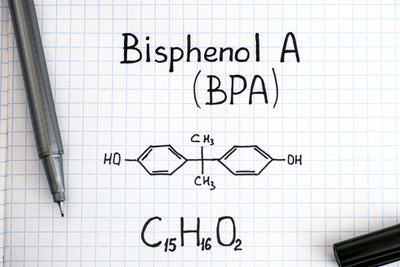Analies Dyjak, M.A. | Head of Policy and Perspectives
Endocrine Disruptors are a category of contaminants that impact your body's natural ability to regulate hormones. Endocrine disruptors can be found in a variety of different consumer products like plastic containers, food cans, cosmetics, medical supplies, as well as drinking water. This article highlights what you need to know about two of the most well-known endocrine disruptors: Bisphenol A (BPA) and Phthalates.
What is Bisphenol A or BPA?
Bisphenol A or BPA is a chemical used in various consumer goods, including several types of plastics, cash receipts, and canned foods. It’s been used to make polycarbonate plastics and epoxy resins since the 1960’s. BPA is considered an endocrine disruptor because of how it interacts with certain hormones in the body, including estrogen receptors. BPA can be particularly dangerous for pregnant mothers and babies for these very reasons. Exposure to BPA can cause a handful of negative health effects, including; male and female infertility, precocious puberty, hormone-related tumors (breast and prostate cancers), and polycystic ovary syndrome (PCOS). The National Institutes of Health has a full and comprehensive list of these health outcomes.
Is BPA Regulated?
One of the shocking realities of BPA in the United States today is that it’s not entirely banned. Certain states created “disclosure requirements” or “reporting values” when scientists began researching its toxicity. The U.S. Food and Drug Administration banned BPA from baby bottles and sippy cups in 2012 which is the only robust regulation to date. Plastic companies instead decided to voluntarily phase-out BPA to avoid legal challenges. The issue is that companies tend to replace harmful contaminants with equally, if not more dangerous chemicals. Consumer products are pushed to market before meaningful health studies are completed. This is extremely problematic because the public typically has no idea of the health impacts of certain consumer products until it's too late. We wrote an in-depth article about how drinking water contaminants are regulated in the U.S. and why agencies follow this rather backwards protocol.
What Are Phthalates?
Phthalates are chemicals that are added to polyvinyl chloride (PVC) pipes and plastics, certain cosmetics, wood varnishes, and even medical supplies. They’re under that class of endocrine disruptors, so they have a direct impact on hormonal functions, reproductive outcomes, and more. Typically people are exposed to phthalates through food that’s been in contact with plastic containers and wraps, consumer or cosmetics containing phthalates as well as drinking water. Again, the good news is that drinking water is the least problematic in that entire list. Similar to BPA, there’s not a whole lot of testing going on for phthalates in drinking water. One of the reasons is because there are so many different variations. A lot of times plastic producers or other industries that produce phthalates will find a version that works better than the last, replace it, and introduce it into the environment. This is the exact same story that's going on with PFAS or ‘forever chemicals’ in drinking water. And all those different variations, only one type of phthalate is regulated in drinking water. So in short it’s safe to say that we just don’t know the entire story of phthalates in drinking water.
Wildfires and Phthalates:
The increase of destructive wildfires in the past few years has prompted researchers to take a closer look at their impact on drinking water. There is a problematic secondary consequence of these natural disasters aside from the influx of debris, fire fighting chemicals, and other pollutants into drinking water sources. Researchers determined that the PVC pipes leached phthalates into the distribution system after coming in contact with heat from the wildfires. Phthalates leach at a high frequency when they are heated. It’s the same reason why certain types of plastic aren’t microwave safe. This will continue to be problematic as more municipalities replace their lead distribution lines with PVC or other types of plastic pipes.
Do All Water Filters Remove BPA and Phthalates?
No. You'll want to make sure your water filter is able to remove these two endocrine disruptors before purchasing.
Other Articles We Think You Might Enjoy:Endocrine Disruptors 101
How Do Hurricanes Impact Drinking Water?
Water Systems and Temporary Outages



